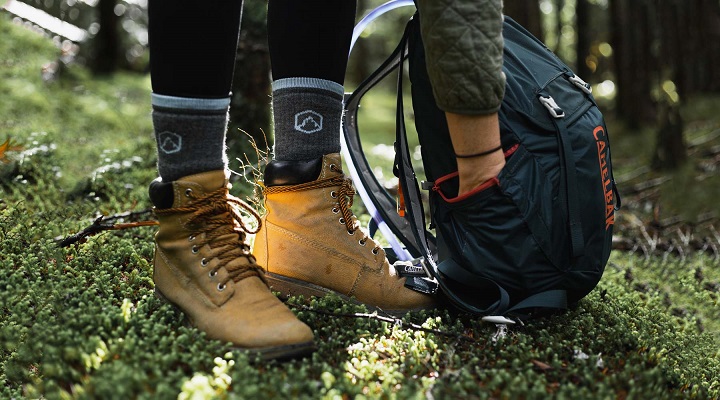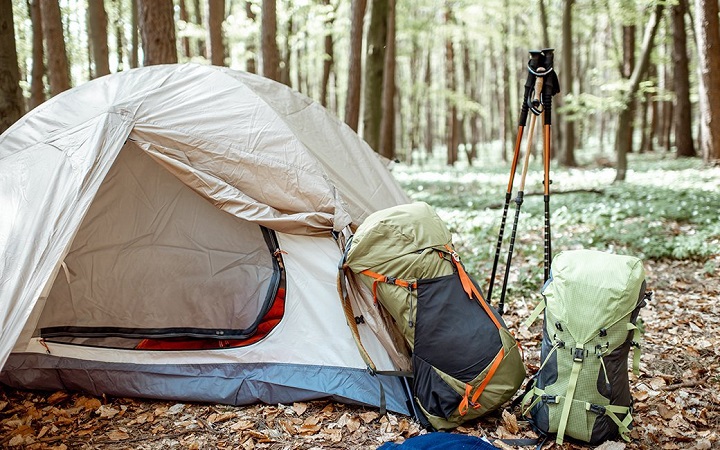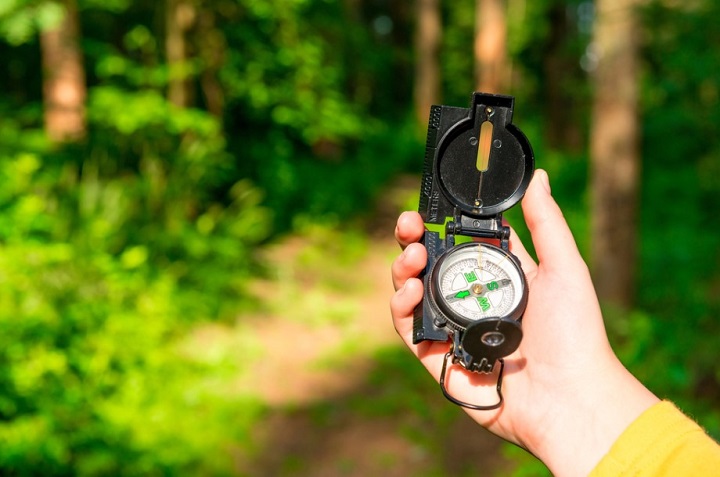Essential Hiking Gear: Everything you Need to Head for The Hills

Preparing your gear for hiking tales down the road takes carefully examining which pieces of equipment are essential to take with you on your much-expected journey. In this article, we are going to examine some of the basic, most important hiking stuff that should be on the list of every serious hiking enthusiast.
Keep reading this article so you can learn more about each one of these items in detail, so you can pick the right outdoor equipment whenever you decide to head for the hills.
Which Equipment is Most Important for Hiking?
Hiking Day Pack

Nothing feels as liberating and exciting as deciding to go for a hike with nothing but a backpack. Just imagine leaving all the unnecessary stuff behind together with your daily worries, obligations and deadlines you are required to meet daily, and taking only the basics requirements for survival in the wilderness. For this matter, you need to find a good daypack for hiking. Considering the wide range of hiking day packs designs, you have unlimited choices when it comes to choosing the right one for your needs.
Different backpacks for hiking differ between themselves in the weight and size they feature. This is mostly dependent on the length of the trip they are intended for and the quantity of gear you’d like to bring with you on your backpacking adventure. Accordingly, there are two different types of backpacks available including hiking day packs and multiday hiking packs.
As their name suggests daypacks are less heavy and smaller in size than the multiday backpacks and are usually reserved for shorter day hikes. They feature a frameless design with comfortable, adjustable, and durable shoulder straps that are well-padded for more comfort. The main function of the shoulder straps is to help you carry the weight on your shoulders so the straps have to be strong enough and made from durable material.
Multi-day hiking packs on the other hand are intended for longer trips. They feature both a suspension system adequate to carry the weight with comfort and the capacity to pack all the bulky gear you plan to put inside them. There are two types of multi-day packs including external frame packs and internal frame packs. Both types feature a comfortable and spacious design to provide enough room for all the significant items you plan to carry with you on your trip, including food for more days as well as extra clothes and layers. Since they’re larger to carry, they are specially designed to transfer most of the weight directly over the hips.
Hiking Tent

Besides, having a good-quality hiking day pack, another essential outdoor gear that you should consider taking with you is a tent. When it comes to choosing the right tent a good quality lightweight hiking tent will be a perfect choice. These types of tents are specially designed to be compact, lightweight, and durable. Moreover, most types of modern hiking tents are made out of nylon and polyester. When it comes to choosing the right hiking tent for your needs, you can find tents in a wide range of sizes and setup styles. Some of the most frequent designs are free-standing, semi-standing, and pole tents. Each one of these designs has its advantages and disadvantages.
The freestanding tents are the most popular design as they are easy to set up, offer great weather protection, and have good overall comfort features. This type of lightweight hiking tent is supported by a framework and can be moved around with ease without collapsing. The semi freestanding tents are somewhat of a hybrid design between freestanding and pole tents. They come with included pole structures that keep them upright while part of their body still needs to be staked out for the tent to reach its full size. Unlike the freestanding models, non-freestanding tents require staking out to keep their shape. Because of these features, they are more popular among more experienced hikers and other outdoor adventurers.
Compass

Perhaps you are wondering whether you need a compass when going outdoors. Well, the short answer is yes. A good outdoor compass should be a vital component of the hiking gear of any serious camper, hiker, or any other outdoor enthusiast. Compared to the past these instruments are now highly advanced in their features, offering you precise locations of your whereabouts, which helps you to more easily orient yourself and stay right on track.
Compasses are broadly categorized into two different types of categories which are both used for hiking including the magnetic compasses and non-magnetic compasses, which both deserve a place in your hiking backpack. There are certain features a good outdoor compass should possess. First and foremost you need to pay attention to the material from which it has been made and pick a durable one. This is a very important factor due to the risk of dropping it accidentally which may happen more often than you think.
Moreover, compasses meant for hiking should have other certain features, such as a declination scale, rotating bezel and a base plate with a ruler. The declination scale will help you make declination adjustments for different areas so that the compass points to true north instead of magnetic north, while the rotating bezel will allow you to easily measure azimuth. A ruler also comes in handy when measuring map distances.
Compasses are usually hemisphere-specific which means that you will need one kind of compass for the northern hemisphere and another for the southern hemisphere. However, most recent advances in technology have made some types of compasses that are equipped with the so-called global needle which works perfectly well anywhere on earth. Other advanced types of compasses are the wrist compass and the so-called competitions compasses. The wrist compass is worn on the wrist and gives you quick directional references, while the competition compass stays on the thumb, while you hold a map.






